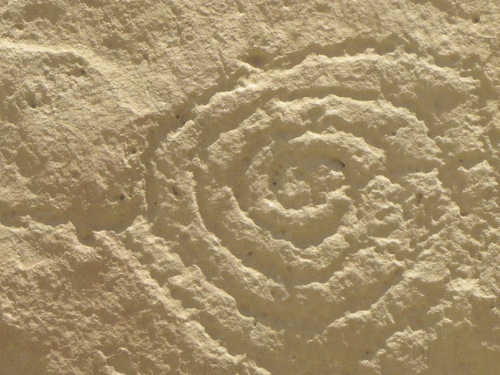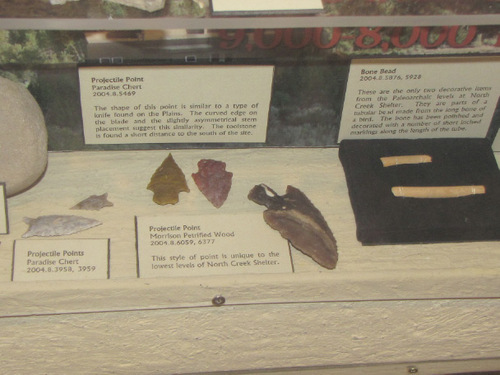This is an archived article that was published on sltrib.com in 2010, and information in the article may be outdated. It is provided only for personal research purposes and may not be reprinted.
Escalante • Joette Marie Rex lives west of remote Escalante in southern Utah, but she's no homesteader: An excavation by archaeologists from Brigham Young University unearthed evidence that the site of Rex's inn may be one of the oldest inhabited places in the area.
The prehistoric dwelling place, called the North Creek Shelter Site, is behind Rex's bed-and-breakfast and has been known for decades. But it wasn't until 2003 that archaeologists began digging through layers of cultural eras until they stopped 12 feet down at the Paleoarchaic period, which dates back to at least 9,000 B.C.
"We knew of pictographs and petroglyphs, but suspected there might be a village," said Rex, who owns the Slot Canyons Inn.
Her suspicions were confirmed when archaeologists from Brigham Young University working at other sites in the southern Utah area agreed to poke around. What they found was one of the oldest archaeological sites in Utah, pushing back by several thousand years the date the area was originally thought to have been first occupied.
Joel Janetski, a retired emeritus archaeologist with BYU who conducted the dig beginning in 2004, said bones and charcoal from the site were radiocarbon dated to several different prehistoric eras.
He said the site reveals how people hunted big game through the ages, including deer, elk and big horn sheep, and eventually started making pottery and established agriculture.
"We see at the site grinding stones like metates and other hand stones," said Janetski, whose research was sponsored in part by a grant from the National Science Foundation.
Janetski also said the site offers strong evidence of climate change that occurred about 10,000 years ago based on vegetation and the types of animal bones found there.
"It appears things started getting drier around 10,000 years ago," said Janetski. "There's evidence of Douglas fir and aspen in the area not here today. They did not have to travel far for firewood."
He said the site holds evidence of cultures ranging from the Paleoarchaic to just more than 100 years ago, including the Fremont and Anasazi peoples and the Paiute. There's also signs of gaps in occupation that could be explained by various factors.
One of the most compelling discoveries was that prehistoric Utahns ground seeds of sagebrush and grasses into a flour used in cooking. Janetski said corn appeared about 1,000 years ago. Pottery sherds indicate there probably was trading with pre-Puebloan cultures from the Four Corners region to the east.
Janetski said the site was backfilled in 2008 after the research was completed. He said North Creek confirmed a fundamental premise in archaeology: Never presume what lies beneath.
"We were totally surprised by what we found," he said.
The researchers have submitted two papers to the journal Kiva, one of which will be published this fall. The other is under review. Two other papers are under consideration by American Antiquity and Utah Historical Quarterly.
"We wanted to reach a variety of people," Janetski said.
While the site has been covered to preserve it, some of the artifacts have been removed and are on display in Rex's inn. She said one of the graduate students working on the project built a display case in the lobby of her business.
In addition to several prehistoric arrow and spear points, the case holds a small human figurine that is likely thousands of years old. Rex is legally entitled to keep the items because they were discovered on land she owns.
She said the site is a short hike above her B&B and is visited by most of her guests who are fascinated by the pictographs and petroglyphs visible on the nearby rock. Among the historic artwork are pioneer autographs.
"We thought it was neat to be able to show people the site," said Rex.
She said she is just the latest human to use the site, located where the confluence of North and Birch creeks form the headwaters of the Escalante River.
"I've found everything from ancient sherds to pieces of [Mormon] pioneer pottery and realized I'm one in a long line of people who has done cooking here," she said.
Archaeological history of North Creek Shelter Site
Paleoarchaic • 9,000 to 8,000 B.C.
Early Archaic • 8,000 to 7,000 B.C.
Archaic • 7,000 to 5,000 B.C.
Fremont A.D. • 800 to 1200
Late Prehistoric • 1300 to 1750
Historic period • 1750 to present









